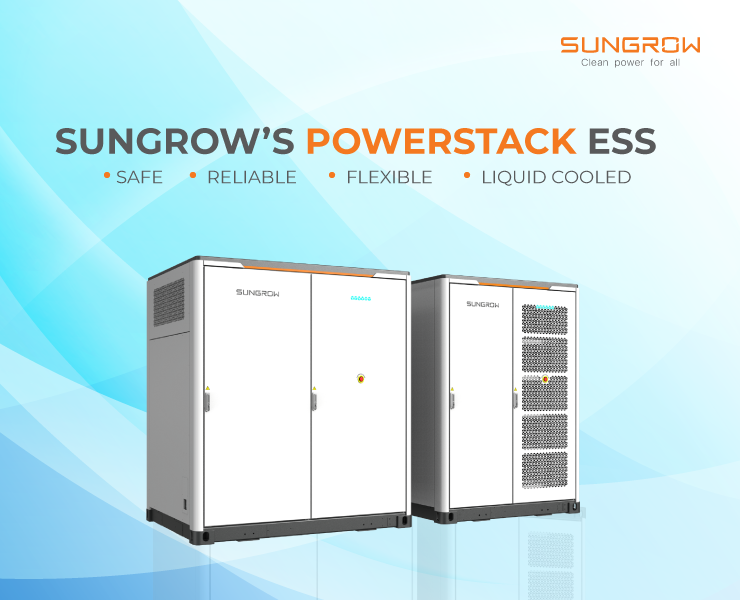
By Jennifer Sulyman, Product Marketing Manager
The PowerStack is designed for the 250kW mainstream market– a portfolio with a battery capacity ranging from 500kWh to 1MWh and is available in two and four hour applications. The solution combines lithium-ion batteries, a power conversion system (PCS), a battery management system (BMS), and a fire suppression system (FSS). The combination of these features streamlines transportation, installation, and operations and maintenance duration and costs. Moreover, the PowerStack is jointly pre-commissioned so that all parameters are set before leaving the manufacturing base; therefore, decreasing on-site commissioning time and guaranteeing early revenue for project owners.
As a result of different technologies, such as liquid cooling, the PowerStack lowers the cost of expenses when compared to air-cooling. The PowerStack comes with a lower battery temperature difference, extending the lifetime of batteries and significantly improving the charging and discharging efficiency. Compared with the conventional air-cooling design, the liquid cooled system also significantly reduces thermal management energy consumption. Furthermore, the automatic state of charge (SoC) calibration and the automated coolant refilling system considerably reduce operating and maintenance (O&M) costs.
Last but not least, the PowerStack upholds to Sungrow’s stringent safety priorities. Sungrow’s PowerStack offers comprehensive safety design from the cell, electrical, and system levels. AI-assisted cell monitoring technology performs high-precision online computing of cell status and provides early-stage warnings to prevent thermal runaway. Four layers of overcurrent protection and anti-arc protection mitigate electrical hazards. Patented pipe connectors, IP65 module design, one-way breather valve, and drip collector ensure system safety in multiple aspects.
Sungrow is an early entrant in the energy storage sector with 3 GWh deployed in 2021. Its liquid cooled ESS PowerStack exceeds the demand for flexibility and outstanding performance. With increasing interest in using ESS to deliver value-added services, the community solar-plus-storage in some American states becomes another increase within the industry. Sungrow is one of a few companies offering both PV inverter and ESS solutions. The Company’s solar-plus-storage comprehensive solution optimized for C&I markets will ensure lower power pricing, and energy security, all while helping to tackle the climate crisis.
To learn more about Sungrow’s PowerStack and other energy storage solutions, click here.
Sponsored Content by Sungrow





The rote IOU electric utilities need to get past their paradigm of energy storage is only good for 1 to 4 hours and only with lithium ion battery technology. IF one is going to use the site for frequency and voltage grid services then molten salt/metal batteries like those produced by AMBRI are a superior choice, not only for fast charge/discharge but as a sealed “safety” battery solution that will last 20 years by design specifications and ‘probably’ up to 50 years in possible use. Redox flow batteries UET; Iron/Air Form Energy; (A-CAES) Hydrostor; Italian company Energy Dome, using CO2 as an energy storage medium for long range energy storage all have technology waiting for a massive energy storage project to be launched by some Energy company as part of the EPC of a comprehensive utility scale solar PV or wind farm with energy storage.
A company Diamfab that is bringing online manufacturing in a process of laying down a micro-thin layer of diamond to use as a substrate for power transistors will allow smaller inverter packages and inverters that can be operated without extra cooling in harsh heat environments. IF designed with temperature controlled heat exchange, either by heatsink to air exchange or liquid cooling could make a robust inverter design for the solar PV industry that is compact high energy control that could allow 20MWh of generation in the size of a refrigerator. With liquid cooling one might be able to compartmentalize the inverters into slide out drawers in a panel and add 1MWh for each drawer added to the existing panel. The technology is available, the problem to solve is the paradigm of ‘mass acceptance’ and adoption of the technology in all energy designs moving forward.